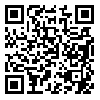Articles accepted at the time of publication
Back to the articles list |
Back to browse issues page
1- Islamic Azad University،Science And Research Branch
2- Assistance professor in general linguistics, Islamic Azad University, Central Tehran Branch, Tehran, Iran(correspondence author) ,ba.modarresi@yahoo.com
3- Assistance professor in general linguistics
2- Assistance professor in general linguistics, Islamic Azad University, Central Tehran Branch, Tehran, Iran(correspondence author) ,
3- Assistance professor in general linguistics
Abstract: (85 Views)
Distributed Morphology was first introduced by Halle and Marantz in 1993. In this theoretical approach, there is no distinction between word formation and sentence structure. Syntax constructs a system of structures composed of morphemes, producing entities that connect phonetics and semantics. This study examines the process of partial reduplication and the role of aspect in the formation of reduplicated forms in Persian from the perspective of Distributed Morphology theory. According to Anousheh (2021: 616), independent computations applied after representation at the phonological and logical levels provide an appropriate theoretical framework for analyzing this process. In this study, using a descriptive-analytical method, various examples of partial reduplication processes in Persian have been examined.
The results of the research indicate that in the formation of partial reduplicated forms, the constituent roots of the reduplicated form, after merging with their repeated part and moving to the specifier position of the aspect group through the agreement relationship of specifier-head, review the aspectual feature of the reduplicated form. This process leads to the creation of more complex structures that contain the features of durative aspect and action repetition. The findings of the study also reveal that the partial reduplicated forms obtained go beyond the mere morphological repetition of a lexical element.. Thus, it can be concluded that the process of partial reduplication and the formation of reduplicated forms can be explained within the framework of Distributed Morphology
The results of the research indicate that in the formation of partial reduplicated forms, the constituent roots of the reduplicated form, after merging with their repeated part and moving to the specifier position of the aspect group through the agreement relationship of specifier-head, review the aspectual feature of the reduplicated form. This process leads to the creation of more complex structures that contain the features of durative aspect and action repetition. The findings of the study also reveal that the partial reduplicated forms obtained go beyond the mere morphological repetition of a lexical element.. Thus, it can be concluded that the process of partial reduplication and the formation of reduplicated forms can be explained within the framework of Distributed Morphology
Article Type: مقالات علمی پژوهشی |
Subject:
Linguistics
Send email to the article author
| Rights and permissions | |
 |
This work is licensed under a Creative Commons Attribution-NonCommercial 4.0 International License. |






